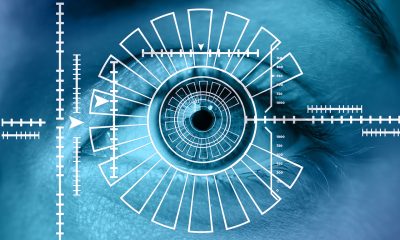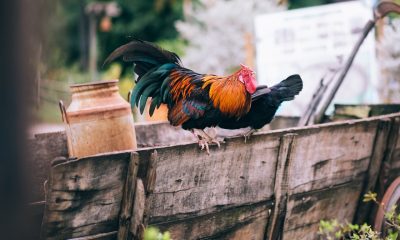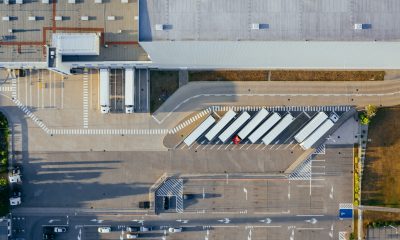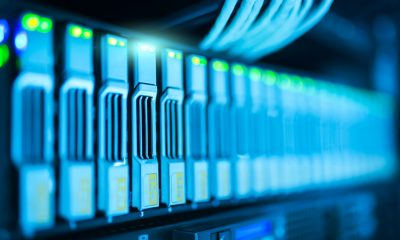Few people know this, but the farming industry is in a state of transition. Tougher demands are getting placed on farmers to produce more food and drink for human consumption. As the world’s population grows, there is a greater emphasis on the resources that farms supply.
Technology is lending a helping hand to today’s tech-savvy farmers in more ways than one. Even if a farmer is lucky enough to have the money to hire an army of people, there will still be a need to improve efficiency and production.
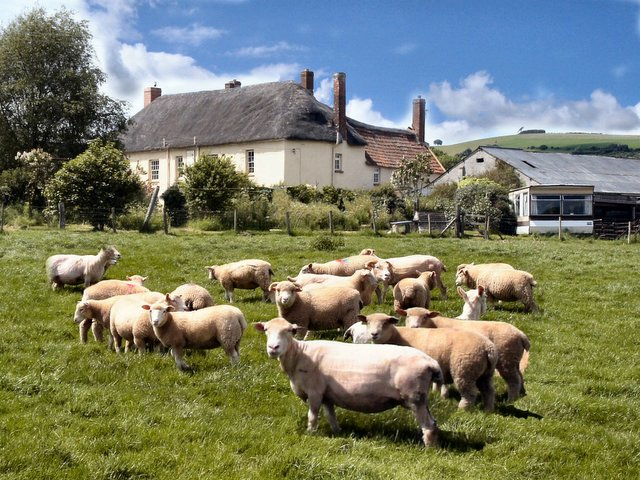
Image by John Spivey
The Consumer Electronics Show in Nevada is home to new product developments by a plethora of companies. But did you know that many of today’s technology first shown in events like that get used by the farming industry? Here are a few examples to show you just how tech-centric today’s farmers are:
Robots
If you’ve got visions of the robots shown in cartoon programs like The Jetsons, you are on the right tracks! Believe it or not, the use of robotics in the farming industry is growing in popularity.
Dairy farmers have used robotic milking machines for cows since the early 1990s. Technology has come a long way since then. Today’s “milking parlours” allow cows to decide when they wish to be milked and how. They also monitor the quality of the milk produced so that farmers can keep a closer eye on cows that may have problems.
Such systems also allow farmers to maintain a look on how cows are feeding. Sometimes cows may not produce enough milk because they aren’t feeding well. Technology helps dairy producers to gain a valuable insight into milk production at their farms.
There are several other reasons why robots are preferred on dairy farms across the globe. First, there’s the efficiency aspect. If cows are calmer, they produce better quality of milk. Many farmers new to robotic “milkers” note that their yield increases by at least 10% in just four months.
Robots can also help in other ways too. “Feed pushers” ensure that all cows enjoy eating high-quality food at a location to suit them. Farmers can even buy robot cleaners to clean the shed where the milking parlour is set up! Such measures ensure that farmers can dedicate their time to other areas.
Drones
The use of pilotless aircraft, drones, is increasing each day. Some people fly drones for leisure purposes. While others may do so for more sinister reasons, such as espionage! But drones play an important part in the management of farms in the 21st century.
When you operate a farm, you are dealing with a significant size of land. It is seldom easy to manage such land by yourself or with one or two other people. As a farmer, part of your job is to make sure that your livestock are safe and secure from natural predators like foxes. And enterprising criminals that want to steal your farm animals and sell them on the black market.
It’s a full-time job in itself walking or driving on your land. Especially if you have to deal with incidents such as livestock going astray! Technology’s contribution to the management of farms are drones, believe it or not.
These pilotless aircraft can get operated from a fair distance, such as in the farmer’s home. Farmers can use drones to survey the land for various reasons like finding missing sheep or checking for damage to fences.
Drones can get fitted with high-definition cameras, and those cameras can get accessed wirelessly. That means when the drones get operated, real-time video footage can get seen from the system running them.

Many farmers use drones that are controlled by mobile devices like smartphones and tablets. That means they can control where they get flown while they are working in and around the farm.
Let me give you a personal, real-life example. On a recent visit to a friend’s farm, he showed me the tractor that he bought through the http://farm.autotrader.co.uk website. He had a special mount fitted in the cab for his iPad so that he can control his drone when he’s working out on the fields.
The drone allows him to check for any areas that require his attention so that he can be sure all of his fields are ploughed correctly.
Telematics
On today’s modern cars, many of them have telematics boxes for insurance purposes. In a nutshell, they are GPS devices that keep track of where cars go, at what times and how fast they drive.
Telematics also have a place in today’s modern farm. Of course, farmers don’t spend their days racing cars around their fields. At least, not the ones that I know! The thing about telematics is that they are useful for keeping tabs on farm animals.
Sheep, cows, in fact, any farm animals you care to name. They can get fitted with small GPS devices so that you know where they all are at any one time. As you can appreciate, some farmers have thousands of animals.
The growing threat of livestock theft is a common problem for today’s modern farmers. They can invest in an array of security measures. But the sad truth is that they don’t always prevent theft. With telematics, farmers can learn if there are any thefts imminent. That’s because they have to power to check the location of their livestock at any time.
If their animals are somewhere on fields they seldom visit, it’s a good indicator that something is amiss.
Three-dimensional monitoring
Last, but not least, farmers can also fit monitoring devices to their livestock. These micro-sized gadgets can get farmers an insight into the health of their animals. Examples include pedometers to measure how often animals walk, run or graze each day.
Rumination microphones are also a good indicator of how often cows spend cudding. If there are any significant rises or dips, farmers can check the animal’s health and act upon any problems sooner rather than later.
Environment
The Future of Fashion: The Rise of Eco-Conscious Brands in the Luxury Market
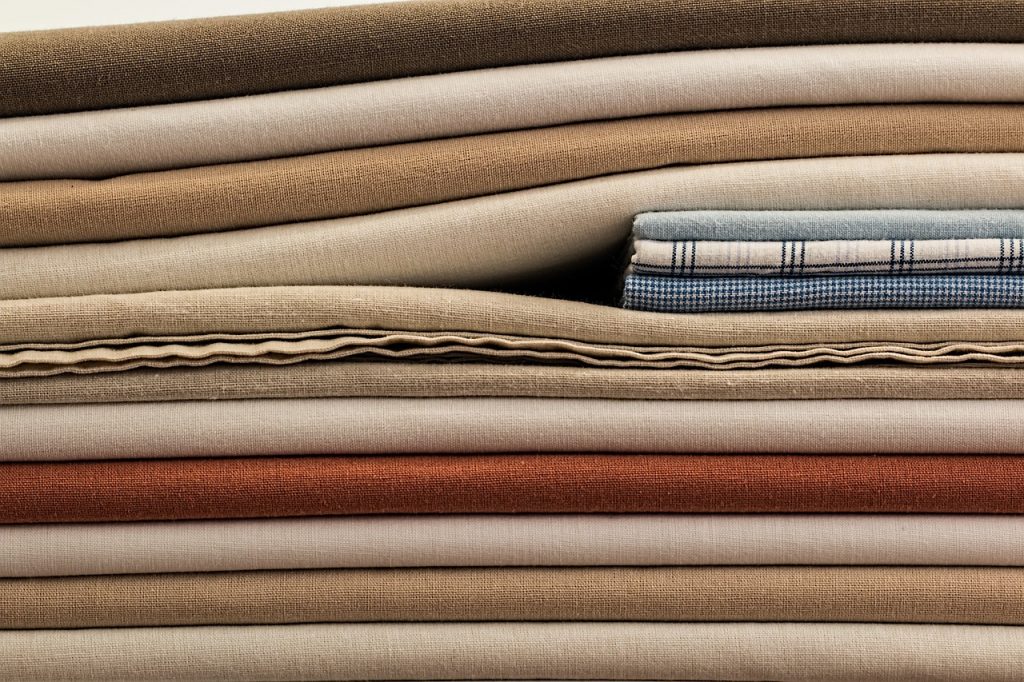
The once opulent and exclusive realm of luxury fashion is undergoing a dramatic transformation. Driven by a growing global consciousness about environmental impact, consumers are demanding more sustainable choices, even at the highest price points. This shift in consumer preferences is reshaping the industry, forcing luxury brands to reevaluate their production processes and material sourcing.
As a result, luxury eco-friendly collections are becoming increasingly sought after, and brands that prioritize sustainability are gaining a competitive edge.
Key Trends Shaping the Market
The luxury fashion market is experiencing a significant shift as sustainability becomes a core value for both brands and consumers. One of the most prominent trends is the rise of eco-friendly fashion that blend high-end design with ethical practices.
These collections are characterized by the use of sustainable materials, such as organic cotton, recycled fabrics, and innovative alternatives to traditional textiles. Brands are also focusing on reducing their environmental impact by adopting eco-friendly production methods, including water-saving technologies and carbon-neutral manufacturing processes.
Brands like Onibai are at the forefront of this movement, offering exquisite designs that not only cater to the aesthetic tastes of discerning customers, but also align with their values of sustainability. As consumers become more aware of the environmental and social implications of their purchases, they are increasingly seeking out brands that offer a blend of luxury and responsibility.
Consumer Demand Driving the Change
Consumer preferences are increasingly dictating the trajectory of the fashion industry. A growing emphasis on sustainability and ethical practices has empowered consumers to demand more from the brands they support. This shift in consumer behavior has led to a surge in demand for luxury eco-friendly products, forcing fashion houses to adapt their business models accordingly. This demand for transparency and ethical practices has compelled luxury brands to rethink their strategies and adopt more sustainable business models.
For example, a recent study by McKinsey & Company found that 66 % of global consumers are willing to pay more for sustainable products. This trend is particularly strong among millennials and Gen Z consumers, who are more likely to be environmentally conscious.
Leading the Way: Eco-Conscious Luxury Brands
Several luxury brands have emerged as leaders in the sustainable fashion movement, setting a precedent for the industry. Onibai, for instance, has distinguished itself with its commitment to sustainability, offering luxury eco-friendly collections that resonate with environmentally conscious consumers.
By prioritizing the use of organic materials, low-impact dyes, and fair labor practices, Onibai exemplifies how luxury can coexist with ethical responsibility.
The Future of Luxury Fashion
The rise of eco-conscious brands in the luxury market marks a significant turning point for the fashion industry. As more brands embrace sustainability, the definition of luxury is evolving to encompass not only quality and craftsmanship but also ethical responsibility. This shift is not just a passing trend; it represents the future of fashion, where consumers and brands alike recognize the importance of preserving our planet while enjoying the finer things in life.
In this new era of luxury fashion, eco-friendly collections like those offered by Onibai are leading the way, proving that sustainability is not a compromise but a new standard of excellence. As the demand for sustainable fashion continues to grow, the future of luxury will undoubtedly be defined by its commitment to eco-consciousness, ensuring that elegance and ethics go hand in hand.
Environment
Redefining marine recycling through painting and sculpture
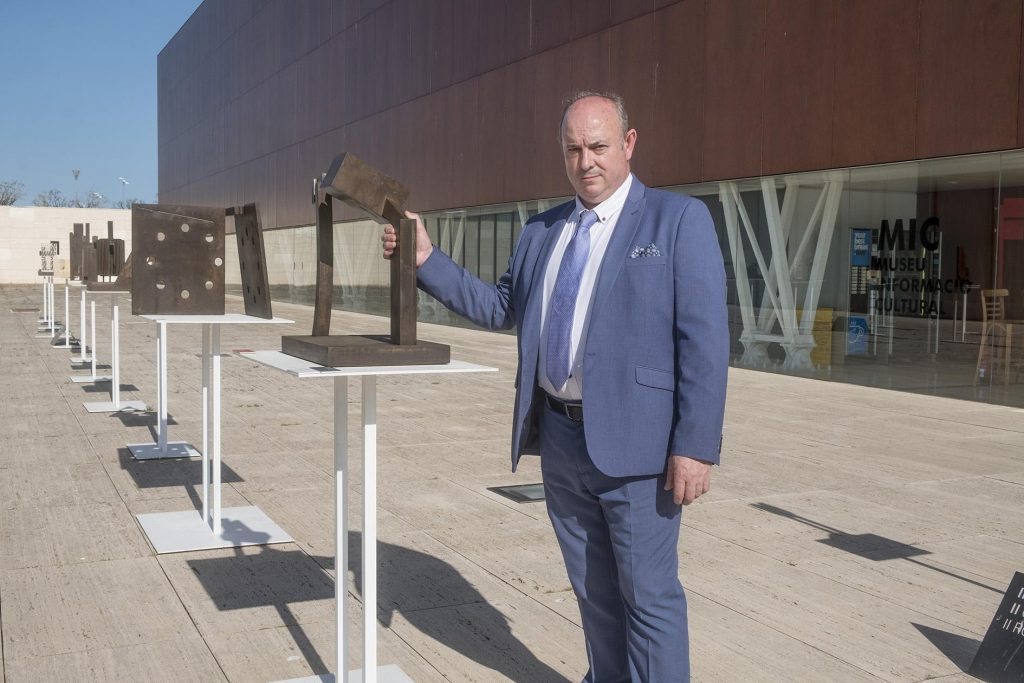
Frutos María Martínez, a self-taught visual artist, has been rescuing waste from the ocean’s waters for decades, turning it into beautiful and elegant artwork. Finishing his first painting and sculpture pieces at just fourteen, Frutos has spent his entire life guided by his passion for art. Becoming a professional artist in the mid-1980s after working at car dealerships, Frutos used his skills and expertise with metal to create sculptures and paintings, inspired by the materials he found along the Mediterranean Coast.
In his pieces, Frutos combines numerous medias to create sculptures, paintings, and collages. As part of his process, María spends time exploring the beaches and waters of Alicante, a Mediterranean city along the southeastern coast of Spain and his home since 1985.
Here, he has found all sorts of materials that have gone on to become pieces in his collections. Steel, iron, wood, nets, and textiles, among other objects, that Frutos salvaged from the ocean can all be found in his art.
By reusing and recycling these found objects, the artist is able to give new life to abandoned and forgotten waste. María recognizes the environmental issues we are facing at a global level, and his art seeks to raise awareness of these challenges. As his materials are pulled straight from the Mediterranean Sea, he is especially invested in taking care of marine life and our oceans. With each item the artist salvages from the ocean, one less piece of waste is polluting the waters.
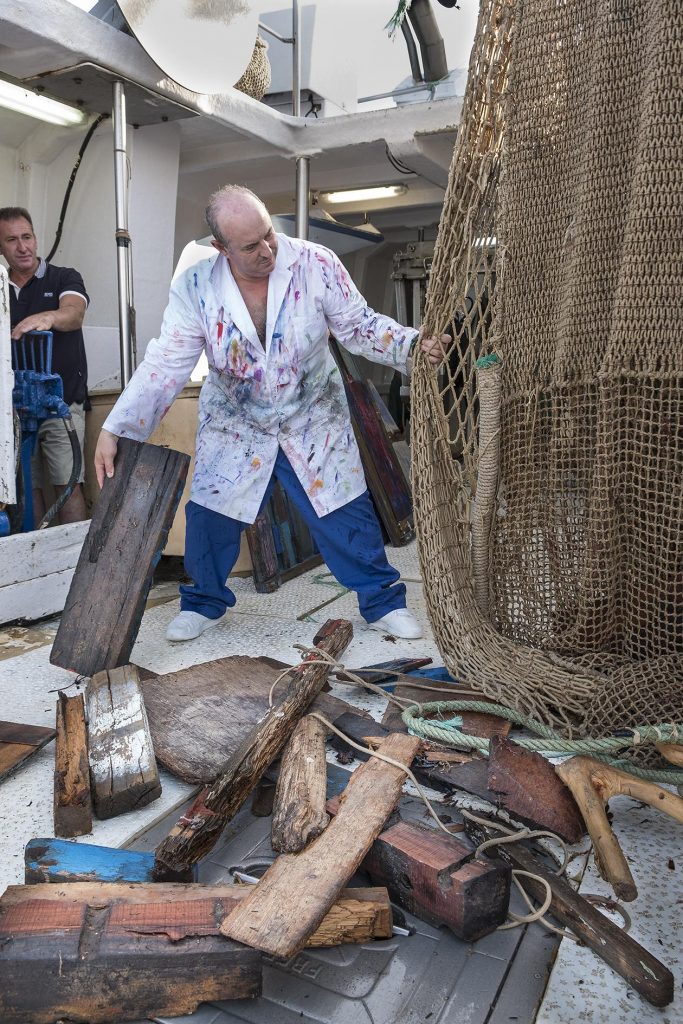
Once the flotsam is collected, Frutos returns to his workshop where he creates works of art in different forms. While other artists may send their work to be fabricated by others, María could not imagine his pieces being created in a place other than his studio. Here, he uses his innate skills with metal and machinery to forge and construct works of beauty. His sculptures follow hard lines, both straight and curved, and his paintings exude color. When making his collages, he takes his found mixed media and creates new stories. He adds paint to wood that was floating in the sea or combines various materials together, reimagining a life for objects that were once trash.
With a true passion for his work, he creates through intuition. He explains that there is a moment when his art becomes completely emotional and personal, “each piece is imbued with my experiences and emotion, all lumped together, all conveyed by means of materials, technique, design and imagination.” The works his hands awaken and renew are the convergence of his mastery and his spirit, bringing new life to discarded objects.These fascinating pieces have been shown in numerous exhibitions, most recently at the Museum of the University of Alicante. There, the artist presented Acero y pecios del mar (Steel and Sea Wrecks), where two collections were displayed jointly, one offering sculptures focused on steel as a material and the other called Nueva Vida, or New Life, a collection whose pieces were created by recycling materials salvaged from sea wreckage. With this collection, he introduced a new layer into his work, adding an element of chaos and destruction to the backstories of his materials.
An earlier exhibition, Janus, displayed over 40 of Frutos’ sculptures on the University of Alicante’s campus. This exhibit, named for the Roman god of doors, gates and transitions, was influenced by the duality of life, of beginnings and ends, and of old and new. While his finished pieces reflect this duality, the materials used to create them manifest this theme through their first death being revived into new life, a tangible and concrete example of the contrasting polarity he was inspired by.
As with his sculpture-centered exhibitions, his shows highlighting his paintings are full of found materials. Pieces that Frutos creates hang with the weight of rescued and recycled materials, such as rusty iron, steel, and wood. This media has been taken from the ocean and included in his art, conjoining with resin, sands, and paint in bold and striking colors.
Frutos María’s ability to not only find new meaning in recycled and salvaged objects, but to clean up the oceans and make the environment less polluted, translate through his moving pieces of artwork, and because of this, he has made a name for himself in the art world.
Environment
Wind energy, the best way to invest into renewable energies
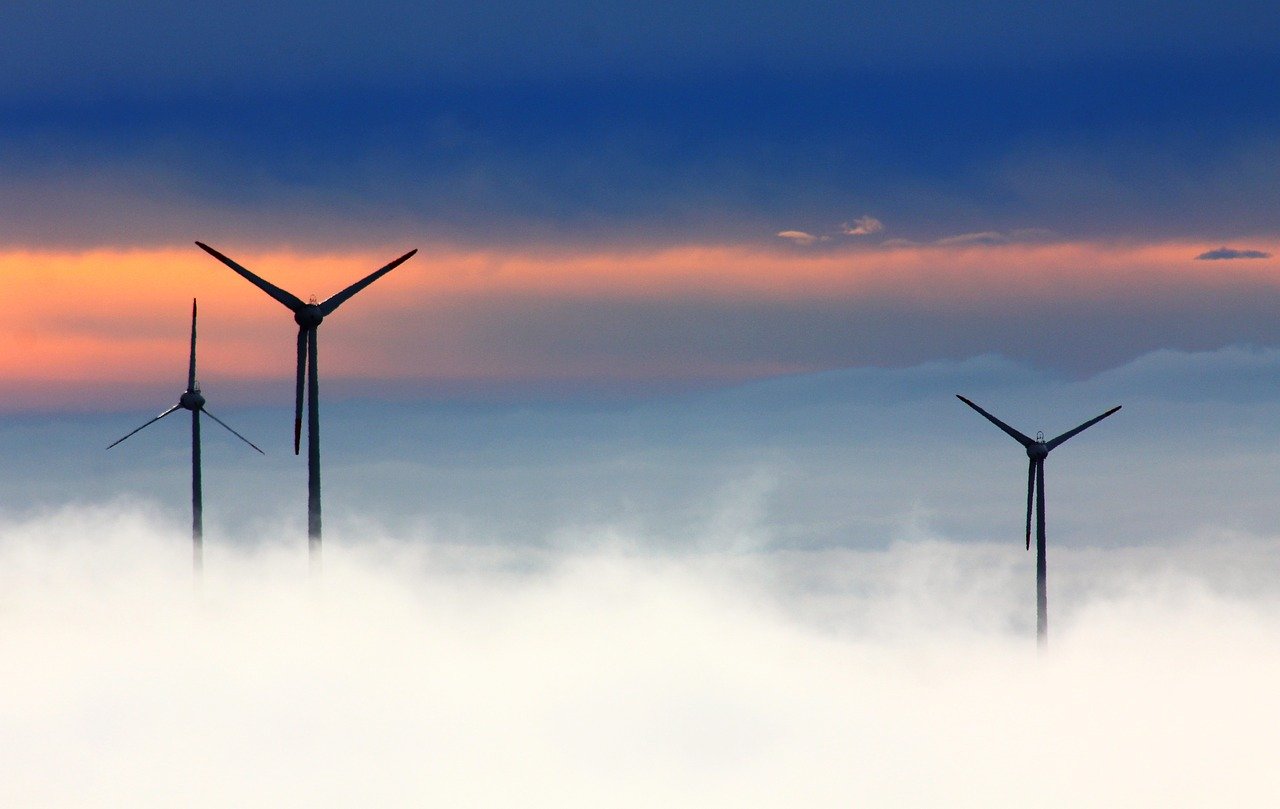
Over the last few years, wind energy has become the type of energy everyone can not stop talking about. This type of energy brings lots of benefits into the table when compared to more traditional sources of energy, like the energy proceeding from radiation or charcoal. Wind energy is cheap to produce, the most efficient renewable energy, and, most importantly, it is an ecological sensitive alternative.
Why should you invest in wind energy?
Wind energy is the energy of tomorrow. This type of energy made their big appearance during the XX century, when wind turbines would be used to bring energy to areas located far from the electricity grid, such as isolated farms, houses or factories.
During the XXI century, wind energy’s popularity kept on rising. Wind energy is as cheap to produce as traditional sources of energy, like radiation or charcoal burning, while falling into the category of renewable energies. This made wind energy become a top contender in the energy industry.
The wind industry’s future looks to be brighter than ever. The current generation is pretty aware of pollution and the effect it has on climate change. This has caused that governments all around the world start promoting new legislations and campaigns promoting renewable energy and, since wind energy is the most efficient type of renewable energy, it is expected that it will become the main source of energy by 2030. Now is the best moment to jump into the wind energy trend!
Making sure you set up an efficient wind farm
As it has been previously stated, wind energy is definitely an option you should consider if you are looking to power up any of your properties or business. However, setting up a wind farm isn’t a small investment, therefore, before starting this process we need to gather all the information we can about its viability. That is why we can not stop recommending that you consult with professional companies like Vortex FDC.
Vortex FDC is a company that has made a name for itself in the wind industry sector. Vortex assists their customers with all the information regarding wind resource they could need.
For example, an important factor we need to consider before setting our wind farm is the terrain. Not all terrains are appropriate to locate a wind farm, therefore, the terrain would need to be assessed before an installation that could result in a waste of assets if the terrain is not appropriate for it. Vortex FDC helps their customers evaluate where the wind farm is going to be placed, and providing information about the wind to choose the type of turbines that would yield better results in that area. Factors like the type of wind (extreme winds, turbulences, etc) or the temperature need to be taken into account when deciding which type of turbine would be more suitable for our wind farm. For example, if we plan to build a wind farm in an area that gets freezing and snowy in winter, we would need to get a turbine system that is cold resistant.
Vortex FDC runs a numerical weather model to feature all the variables that could affect the production levels of your wind farm, regardless of it being situated off-shore or in-shore. Thanks to their always up-to-date technology, you will be able to avoid unpleasant surprises regarding the energy production of your wind farm.
Overall, opting to use wind energy is an amazing idea that will benefit not only our budget, but also the planet. But, in order to do so, we need to make sure that wind farms are viable, and for that, we need to rely on professionals like Vortex FDC.
-

 Technology12 months ago
Technology12 months agoHow Virtual Fly Elevates the World of Flight Simulators
-

 Travel12 months ago
Travel12 months agoImmerse Yourself in Nature: Explore Forest Bathing with a New Guidebook
-

 Europe12 months ago
Europe12 months agoBarcelona and Athens: cities that will leave an everlasting impression
-

 Health12 months ago
Health12 months agoExperience in clinical quality: What is it, and why is it important?
-

 Travel9 months ago
Travel9 months agoEnjoy a luxury holiday in Zanzibar
-

 Culture and Lifestyle8 months ago
Culture and Lifestyle8 months agoDo you want to surprise a special someone?
-

 Business8 months ago
Business8 months agoServiceNow Development Consultancy: Business Process Automation as Disruptive Technology
-

 Environment8 months ago
Environment8 months agoThe Future of Fashion: The Rise of Eco-Conscious Brands in the Luxury Market




